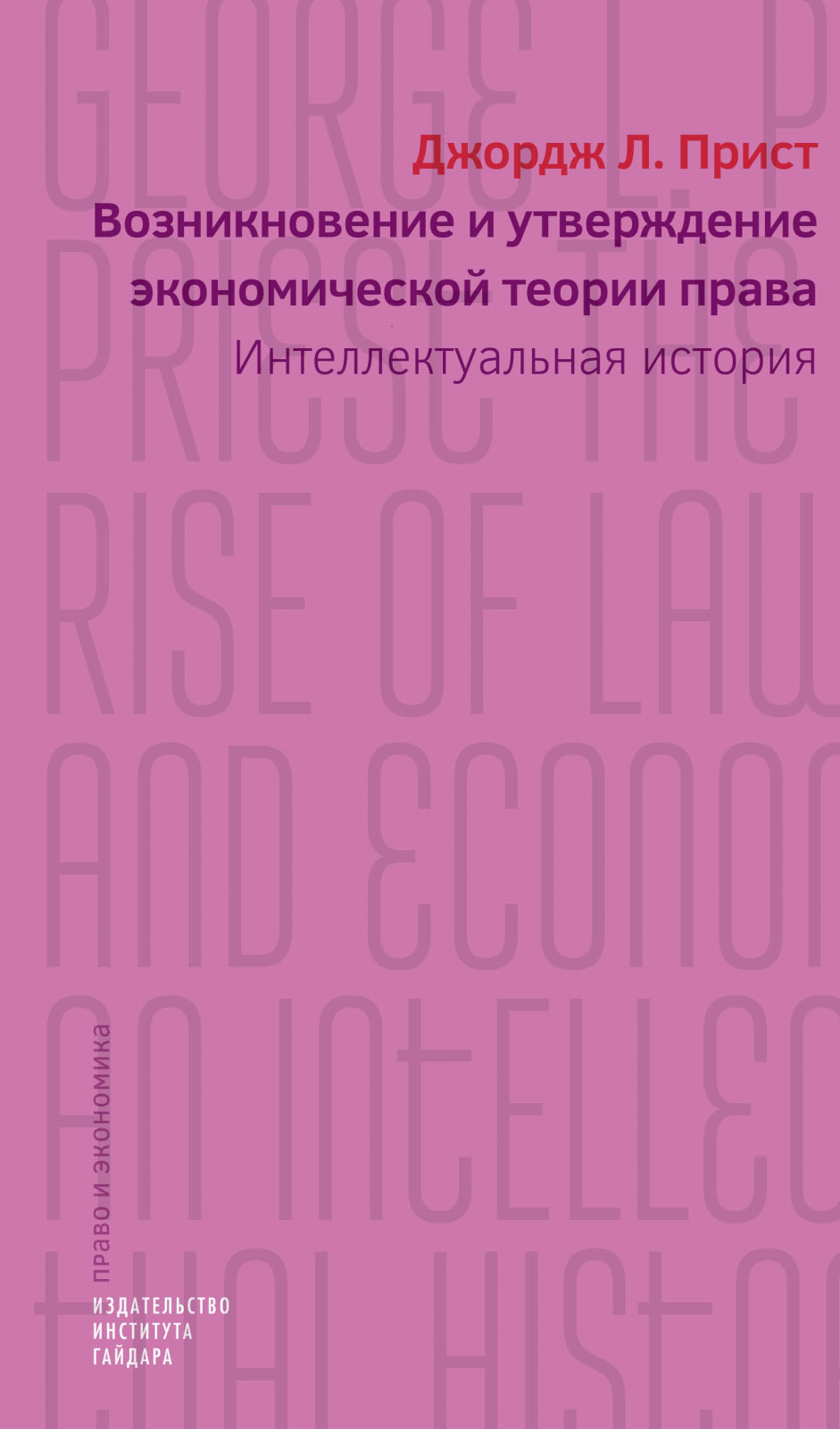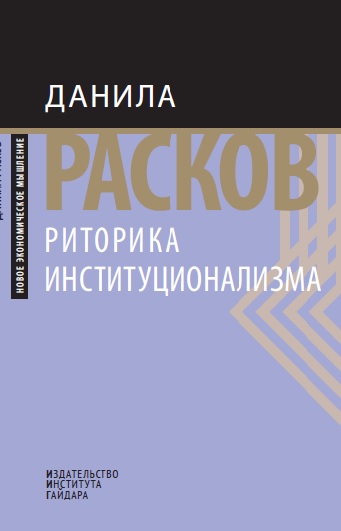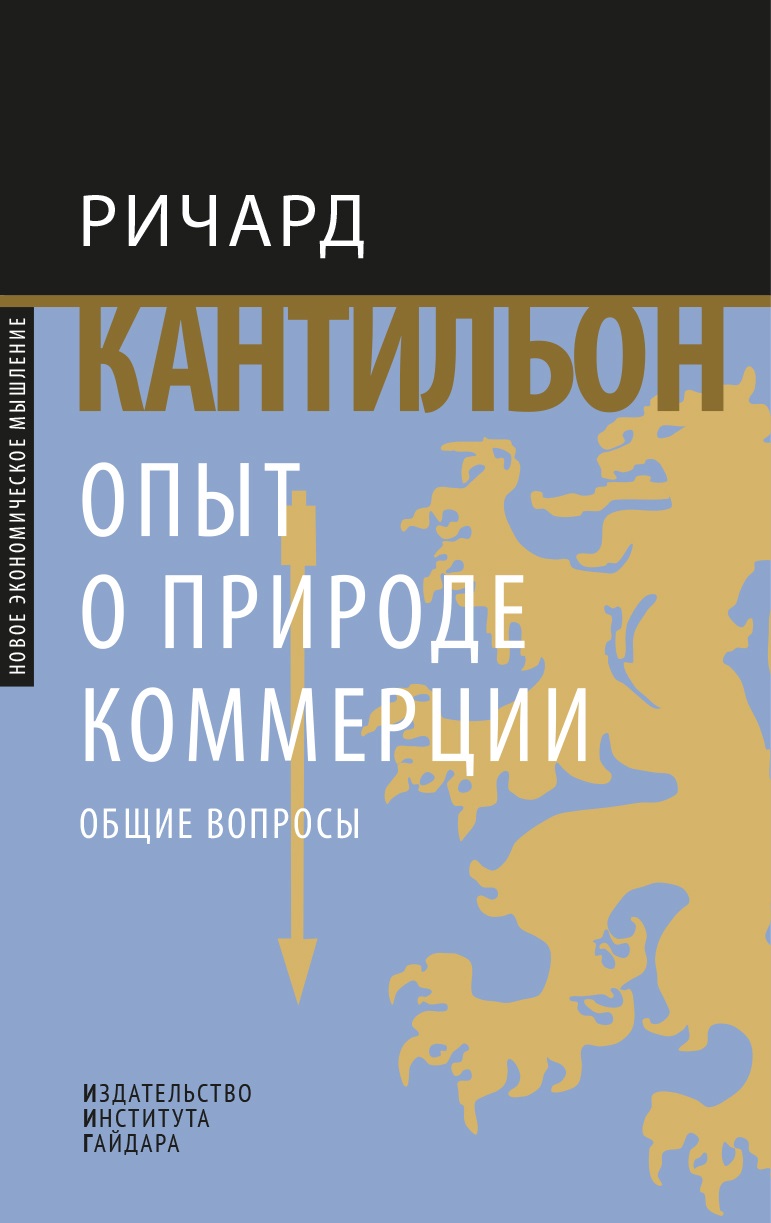NEW ITEMS FROM GAIDAR INSTITUTE PRESS: FEBRUARY 2024
In February 2024, Gaidar Institute Press released four new books.
 George L. Priest
George L. Priest
THE RISE OF LAW AND ECONOMICS. AN INTELLECTUAL HISTORY
This book proposes a brief history of the emergence and approval of the economic theory of law as a field of research in American colleges and law schools, explains the origin of this industry and sources of its growth in the key period of its formation and describes the intellectual roots of this discipline and its connection with the understanding of the legal system as the fact that sets the direction of the functioning of the economy. The author shows what influence Great depression and the expansion of the state’s powers on the development of such an approach to law had. The book also discusses the works of Aaron Director of the late 1950s, the attention in which is focused on economic analysis as a means of understanding the influence of the legal and regulatory system on the distribution of resources in society. Then the author turns to other intellectual founders of this discipline – Ronald Coase, Guido Calabrezi and Richard Pozner – and tries to clarify their contribution. The book also discusses the efforts of Robert Bork and Henry Mann, aimed at expanding the influence of economic analysis of the right to state policy. The book ends with the foundation of the American Association of Law and Economics in 1991.
 Danila Raskov
Danila Raskov
THE RHETORIC OF INSTITUTIONAL ECONOMICS
Economics and knowledge of it – economic theory – cannot exist outside the context of rhetoric or belief. Economists enter into conversation and convince their own rightness with the help of ethos, common places, authority, metaphors and other paths. Not so much facts and logic as stories and narratives, expressed using both verbal constructions and mathematical models or empirics constitute the most important component of this conversation. The book sets itself the task of comprehensively represent the rhetoric of institutional economic theory. The overall approach continues the line outlined by McClosky and Clamer. The focus contains rhetorical strategies of both old and new institutionalism. The book shows how, with the help of the Irony trail, Veblen explains the evolution of the economy with institutions, and the new institutionalists activate the legal (Coase), managerial (Williamson) and synthetic (North) approaches to build the economic theory of institutions.
 Almanac of the Center for Economic Culture
Almanac of the Center for Economic Culture
The collection “Economics vs Art” was prepared according to the results of the Free Arts and Sciences of St. Petersburg State University on June 16–18, 2022 of the conference of the same name. The idea of the collection stems from the fact that, on the one hand, economists not only display, describe reality, but also rethink, evaluate it, and sometimes offer an alternative version of reality; the theoretical and economic understanding of reality applies to art, as the result of not only a creative impulse, but also economic activity. On the other hand, art, as a sphere endowed with a huge potential for the transformation of culture and everyday life, including their economic component, in its extreme manifestations, can postulate both a radical rejection of capitalist relations and an absolute merger with a system of economic exchange.
 Richard Cantillon
Richard Cantillon
EXPERIENCE ABOUT THE NATURE OF COMMERCE
Richard Kantillon is the most mysterious figure in the history of economic thought, and his “Essai sur la nature du commerce en general” is a book without which economic science would be different. Her ideas became the basis of the “Economic tables” of physiocrats, in many respects anticipated the theory of the population of Maltus, the classical theories of value and money, the theory of entrepreneurship and the spatial economy. “Cradle of political economy” was called it by W.S. Jevons, accidentally discovering a century and a half after writing. This publication is the first full translation of the “Essai” of the Cantillon into Russian. It was based on the first French edition of 1755 and the English translation of Higgs in 1931, as well as on the results of modern studies of Cantillon’s work, reflected in two reprints of “Essai” in 2015: the translation of A. Murphy and the unique variorum-publication of R. van den Berg. In addition to the text of the “Essai”, the tom publishes the translation of the Jevons of 1881, which returned the name of the author after centuries of oblivion, the article by Alexandra Eidelnant of 1927 is the only work of the Soviet period about Cantillon, as well as an introductory article on the personal fate of the author of “Essai” and an accompanying article about the place of Cantillon in the history of economic science.
Wednesday, 14.02.2024